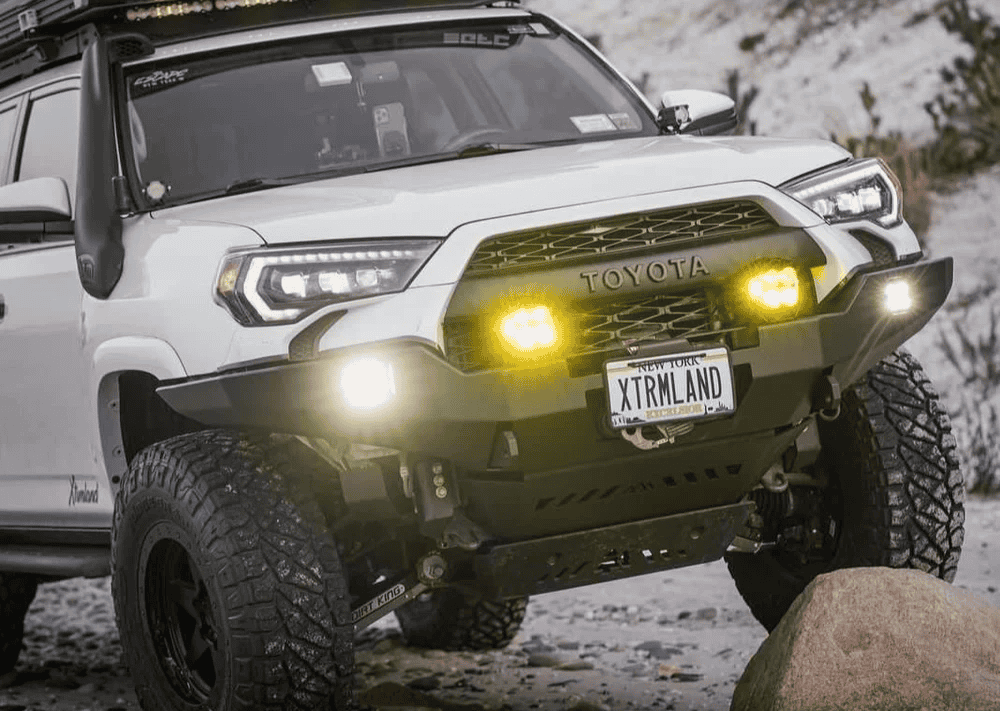Overland Vehicles

Corrosion is a chemical reaction between metal, oxygen, and moisture that gradually consumes structural steel. Road salt accelerates that process by forming conductive brines that keep the reaction active for months. An effective anti corrosion coating interrupts this cycle by creating a continuous barrier, adding sacrificial protection, or both. The most durable results come from pairing a tight surface profile with a compatible primer and top layer to keep water out and resist chips. In the field, success looks like clean drainage paths, sealed seams, and coatings with consistent film thickness across edges and welds.
A complete system addresses three threats. First, permeation of water and oxygen through the film. Second, galvanic coupling between dissimilar metals such as steel fasteners in aluminum brackets. Third, mechanical damage from gravel and mud that can nick a coating and start underfilm corrosion. Matching chemistry to exposure is key, because no single product wins in every environment.
Zinc rich primers provide sacrificial or cathodic protection on steel. The zinc corrodes in preference to steel when the film is scratched, slowing creep beneath the coating. Epoxy primers deliver exceptional adhesion and low permeability, making them a strong base layer for wet, salty climates. Polyurethane or polyaspartic topcoats add UV stability and abrasion resistance, important for exposed underbodies and steps. For enclosed cavities, a creeping cavity wax can wick into seams and weld flanges where spraying a thick film is difficult.
Elastomeric underbody coatings and bedliner style products absorb stone impacts and reduce chip propagation. On aluminum components, conversion coatings and compatible epoxy sealers reduce pitting and help manage galvanic pairs when steel hardware is present. Stainless parts benefit from proper passivation and sealing of crevices. For mixed material assemblies, isolating washers and sealants reduce direct metal contact and limit galvanic drivers that often appear around roof racks, sliders, and bumper mounts.
Harsh winters with frequent salt brine call for zinc rich primer beneath a high build epoxy and a tough top layer. Coastal rigs need strong barrier protection plus frequent rinse routines to manage chloride deposits. Desert trucks face abrasion and impact, so flexible yet dense underbody coatings combined with edge sealing perform well.
Surface preparation has more effect on longevity than any product label. Degreasing, removal of mill scale and rust, and creation of a uniform profile let primers bite into metal. Media blasting to an appropriate cleanliness grade produces the most consistent anchor profile, while mechanical sanding and chemical rust converters are options when blasting is not feasible. Seal sharp edges and weld toes with stripe coats before full coverage to avoid thin spots that can fail first.
Coating performance depends on film build measured in mils. Too thin and the barrier leaks. Too thick and flexibility suffers, leading to cracking on edges and around hardware. Use wet film gauges during application and verify dry film thickness after cure. Simple adhesion tests and regular inspections catch damage early. Salt spray testing and cyclic corrosion standards inform product choice, but field checks matter most because debris, drain paths, and fastener sealing are what determine real service life on vehicles.
Seal seams, grommets, and drilled holes immediately after fabrication. Add drain paths so water cannot pool inside frame rails or rocker cavities. Use dielectric or anti seize compounds on fasteners to limit crevice corrosion and support future service.
After water crossings or winter travel, rinse underbodies to remove brine and silt. Touch up chips quickly, and reapply cavity wax on a schedule since thin films can be displaced by vibration over time.
As custom builders know, corrosion control starts at the design table. Bracket geometry, hardware selection, and access for future service all influence how long a coating system lasts. When a rig is destined for trail duty, stone shields and liners protect high impact zones so the coating beneath remains intact.
For owners planning an adventure build, it helps to fold corrosion planning into the upfit timeline. During a suspension or bumper install, fasteners and mounting points are accessible for cleaning, sealing, and coating, which saves labor and improves results. If you are evaluating a full overland platform, see our Overland rigs to understand how a durable foundation supports long term reliability off road and on the highway.
OZK integrates corrosion defense into fabrication and assembly, from edge rounding before primer to stripe coats on welds and proper film checks at handoff. When a build requires armor, lighting, or racks, our team isolates dissimilar metals and seals penetrations to prevent galvanic hot spots. If you are planning heavy use on forest roads or winter travel, explore our Custom overland upfit options and we will recommend a coating stack that fits your routes and climate.
If you are comparing products and application methods, start by mapping your environment, the service duty, and how often you can inspect the vehicle. That checklist makes it straightforward to choose between zinc primers, epoxy systems, flexible underbody coatings, and cavity protection. For a build partner that treats corrosion resistance as a system, learn what sets us apart on Why choose OZK Customs.
Drive farther with fewer surprises. Share your use case, location, and target timeline, and we will design a corrosion plan that matches your build. From careful prep to measured film thickness and clean service access, our approach keeps the structure sound so your adventures stay simple.
Ready to protect your build for the long haul? Tell us about your van or overland rig and we will spec a corrosion defense package that fits your terrain, climate, and budget. Our team handles surface prep, coating selection, and quality checks so you drive away with confidence. Submit the form and let OZK engineer a longer lasting rig.
ADDRESS:
6159 E Huntsville Rd, Fayetteville, AR 72701
PHONE:
(479) 326-9200
EMAIL:
info@ozkvans.com